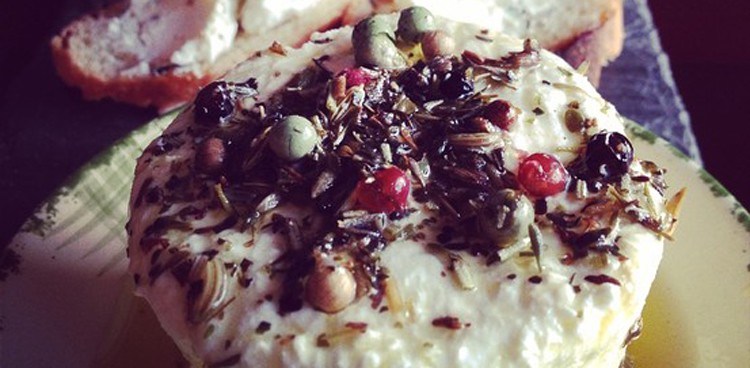
Dairy creates huge revenue for India. Last year, about 700 billion rupee (or $11.6 billion American dollars) came from dairy products. However, as most of this export is milk or yogurt, as India is not particularly known for its cheese — at least, perhaps, not for long.
According to Wall Street Journal writer Shanoor Seervai, independent cheesemakers and cheese shops offering European-style cheeses are popping up all over India. One of these is The Spotted Cow Fromagerie, owned by food photographer Prateeksh Mehra. Cheese had long been the subject of Mehra’s photographs, and eventually he became curious and wanted to try some of the cheeses himself. The Spotted Cow Fromagerie uses resources found in India to make European-style cheeses, naming them in ways that play on the cheeses they are based on — “Bombrie” instead of Brie, for instance.
Mehra is not the only Indian cheesemaker inspired by his experiences with cheese. Mansi Jasani started The Cheese Collective after returning to India after working for Murray’s Cheese and learning about cheesemaking in Vermont. The Cheese Collective uses goat’s milk from Kanataka to create three different types of cheeses: plain, herbed, and fruity.
“I wanted to get other people to love cheese to appreciate its flavors and textures,” says Jasani.
This is very different from the cheese India is used to. Traditional Indian cheeses consist almost entirely of paneer, a non-melting cheese that tastes a bit like ricotta. It’s made by curdling the heated milk with lemon juice, and then draining the excess fluid. (Learn more about paneer here.)
One of the main reasons paneer has held such a monopoly over the Indian cheese industry is because it’s incredibly expensive to import cheese into India, and its hot climate makes it very difficult to store. However, as many of these cheesemakers are using materials found in India, it is clear that cheesemakers are starting to work around these hurdles.
But don’t think these artisan cheeses are limited to specialty cheese shops — major grocery chains like Godrej’s Nature Basket have begun selling artisan cheeses as well. In addition, large Amul cheese sellers like the Gujarat Cooperative Milk Marketing Foundation have been adding cheeses like mozzarella and gouda to their repertoire over the past fifteen years.
“We have seen [gourmet cheese] sales grow exponentially,” says Mohit Khattar, managing director of Godrej Nature’s Basket. “It contributes to just short of a tenth of our revenues.”
Though the revenue of this type of cheese is still relatively small, making about 10 million rupee last year (of the 700 billion made from dairy products), it is a growing industry. Cheesemakers, like Mehra and Isani, are expanding the palates of the people of India. In addition, larger grocers and cheesemaking companies are seeking ways to make different cheeses with the resources they have.
Paneer is a wonderful cheese. The process of making it is unlike any other type of cheese, and it has a rich history behind it. It will always be a huge part of India’s culture, but now their cheese culture is expanding, and seeing where it goes from here will be incredibly interesting.
Photo Credit: Wall Street Journal



